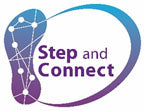Sensory training with multi-sensory feedback may be an important addition to exercise programs for people with Parkinson's disease, as this new study showed promising results with improved walking, but even more importantly retention of the gains. This single-blinded, randomized controlled pilot study used a home program with or without real-time multimodal sensory feedback with stepping exercises which progressed in speed and distance.
The full article: ‘Use of real-time multimodal sensory feedback home program improved backward stride and retention for people with Parkinson Disease: A Pilot Study’ recently published in the Clinical Parkinsonism & Related Disorders journal is available to download here.
Two groups of people with Parkinson’s disease completed the same basic exercises 5 times weekly for six weeks, followed by 6 weeks without exercise to assess long-term retention. Six additional weeks of exercises were completed to assess recovery of potential losses.
The exercise group that used Multimodal sensory feedback (MSSF) incorporated the use of the:
- Balance Matters System® for visual, tactile, and auditory feedback about distance and direction stepped
- Chest laser light for visual feedback of trunk movements
- 1-pound weights on wrists and forefeet for proprioceptive feedback.
This appears to be the first time that 3 types of real-time sensory feedback have been used by people with Parkinson’s disease in a home exercise program (HEP).
Feasibility and Efficacy
Feasibility was observed with positive results for training adherence, project implementation, and participant convenience.
Outcomes showed significant improvements in backward stride which continued to improve without exercise over a 6-week period of no exercise only in the participants using the multisensory feedback. Retention is key for motor learning. Even with an extended break between sessions, improvements continued which is important both physically and psychologically, especially for chronic diseases. Ninety-two percent of participants using feedback (MMSF group) believed their walking improved, compared to only 55% in the exercise only group.

Why is this important?
Backwards Walking: A sensitive measure to detect fallers.
Backward walking has been found to be a more sensitive measure to identify fallers than forward walking in PD, but also in older adults, MS, stroke, and TBI. Backward walking is more challenging to the nervous system. Compared to young adults, backward walking in older adults is characterized by higher stride frequency, slower speed, and increased gait variability. Gait impairments occur frequently in Parkinson Disease (PD) with earliest losses in backward walking and stepping. Shortened backward stride length is a hallmark of PD and a fall-risk factor. This task may be particularly difficult for individuals with Parkinson’s disease (PD) who often fall because of moving or being perturbed in the backward direction.
Here are only a few examples of when we walk or step backwards daily.
- Backing up to sit down
- Moving in a crowd, you step back to allow someone to maneuver in a tight space
- With a 2-person furniture lift, you may be the lucky one to walk backwards
- At an art gallery, you may take a few steps back to take in the beautiful painting.
- Stepping back to open a door
Why multi-sensory feedback may help improve backward stride?
Stepping backwards you cannot see where to place your foot. You must use your proprioception “position sense” from your leg for accurate foot placement since you cannot rely on your vision. In the research study, only the multi-sensory feedback participants had additional information of backward step distance through tactile textured footpads, auditory feedback from the heel-toe clickers, and enhanced proprioceptive feedback from forefoot weights. Taken together with the visual laser feedback for trunk upright posture, the sensory information would permit MMSF participants to re-code angles of the hip, knee, and ankle during the backward stride and stepping exercises. Utilizing multisensory feedback has the potential to improve proprioceptive integration and gait safety while reducing exercise burden especially for backward gait.
This study reveals the value of continuing to study the potential benefits of utilizing sensory feedback to improve walking in people with PD, as well as in other populations.
The Balance Matters System is now being studied in two additional pilot studies: in a group exercise class setting for people with Parkinson's disease and another study for stroke rehab.
Example of an exercise in the Multimodal sensory feedback (MSSF) group

Be the first to comment